Written by Neil Bryant for the URC
I have tried pretty much every Petzl headtorch over the past decade or so, and there have been many, so one thing I know is that Petzl are certainly innovative. As technology improves at a rapid rate, the lights become more powerful and have smaller batteries, but Petzl are also looking at the strap system. Traditionally a strap around the head with one over the top, the Nao changed all that with its interesting system using fully adjustable cord to make a really secure and comfortable fit. I liked the Nao, even if I did get it in a little tangle occasionally when I forgot to pull the strings tight during stowage.
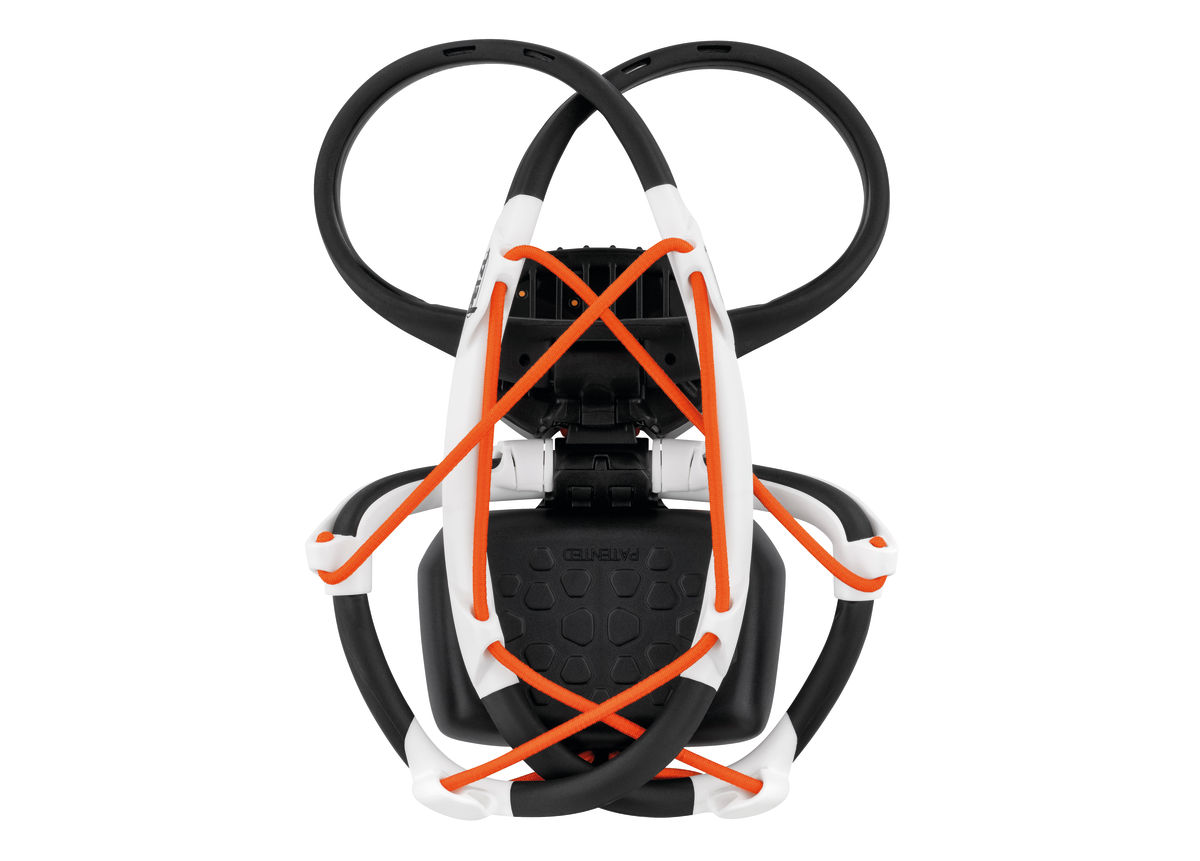
Enter the IKO Core. The strap is, well, it is no longer a strap at all. It is now a Soft, plasticy and solid system, Petzl Have named AIRFIT. AIRFIT, again has a new elasticated cord system which has a loop you pull at the centre rear to secure it to your head. It really is simple. You loosen it, place it on your head, then pull till it is secure. After that it really will not budge on your head. The non-material strap system is very comfortable too which surprised me a little. A brilliant part of this system is that it doesn’t soak up sweat like a standard elasticated headstrap would. I sweat a lot so my headtorch gets a little unpleasant to wear, especially if using for multi day stuff where you wear then have to wear it again wet and cold.
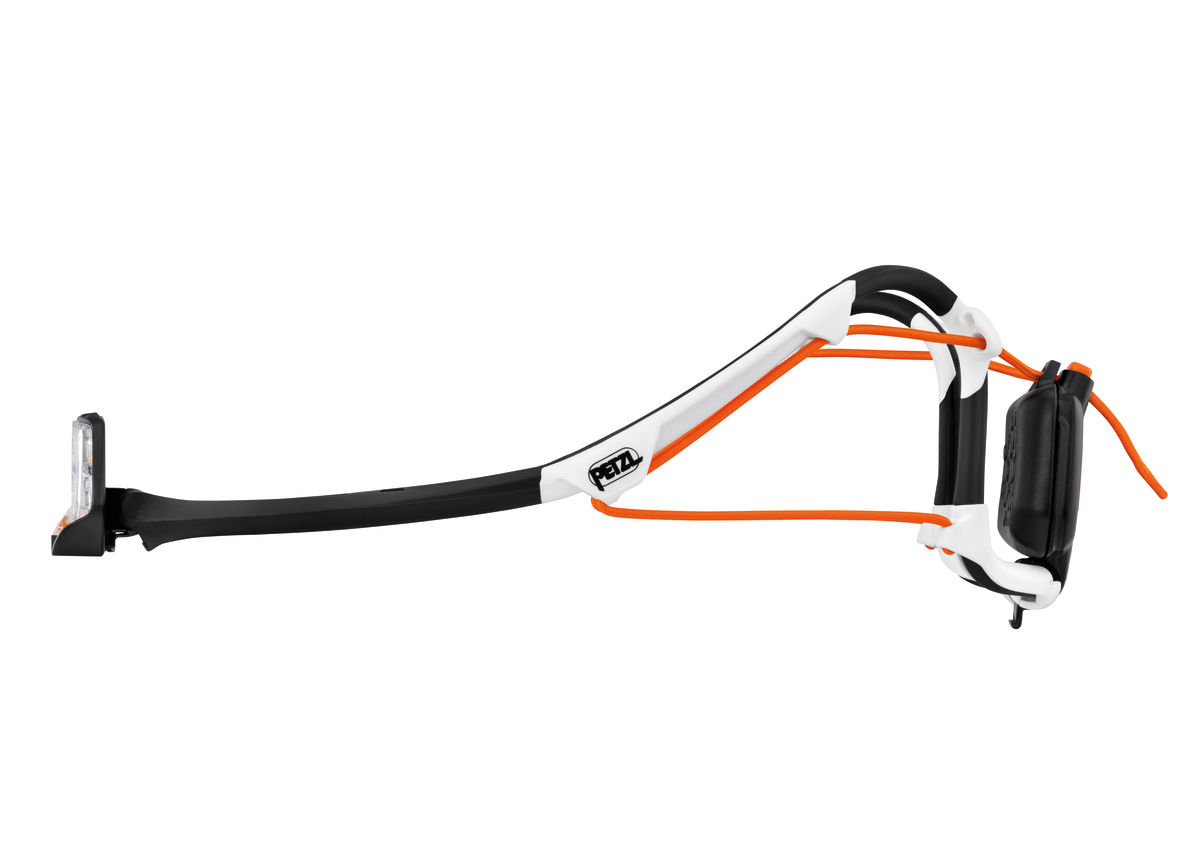
The power source is the Hybrid concept, meaning you can use it with the Core rechargeable battery it comes with, or it will take three AAA batteries. So very adaptable. The cable that takes the power from the battery to the lamp at the front is neatly concealed within the AIRFIT system.
Now onto the actual light. The head has seven LED’s. Three are utilised on the lowest of the three settings and seven are used on the other two.
There is a small rubber covered button on the head to operate it. One press gives you the lowest light setting at a mere 6 lumen, the next press gives you medium setting at 100 lumen and the third press gives you a rather large 500 lumen.
|
Lighting color |
Lighting levels |
Brightness |
Distance |
Burn time |
Reserve |
|
white |
MAX BURN TIME |
6 lm |
10 m |
100 h |
- |
|
STANDARD |
100 lm |
45 m |
9 h |
2h30 |
|
|
MAX POWER |
500 lm |
100 m |
2h30 |
4h30 |
If you like or need a huge amount of light, then the IKO is not for you, but if you are happy with a little less than ‘massive searchlight’ levels of light, then maybe the IKO is good. Nearly all of my night running at the moment, (most of my running is currently in the dark) is on easy, to slightly technical trails, with a little road, and I am familiar with all of it so don’t feel the need for much power. I tried running with the lowest setting of 6 lumen and it was just not bright enough to feel safe with my footing. It was good to have for road sections when I needed to be seen by oncoming traffic.
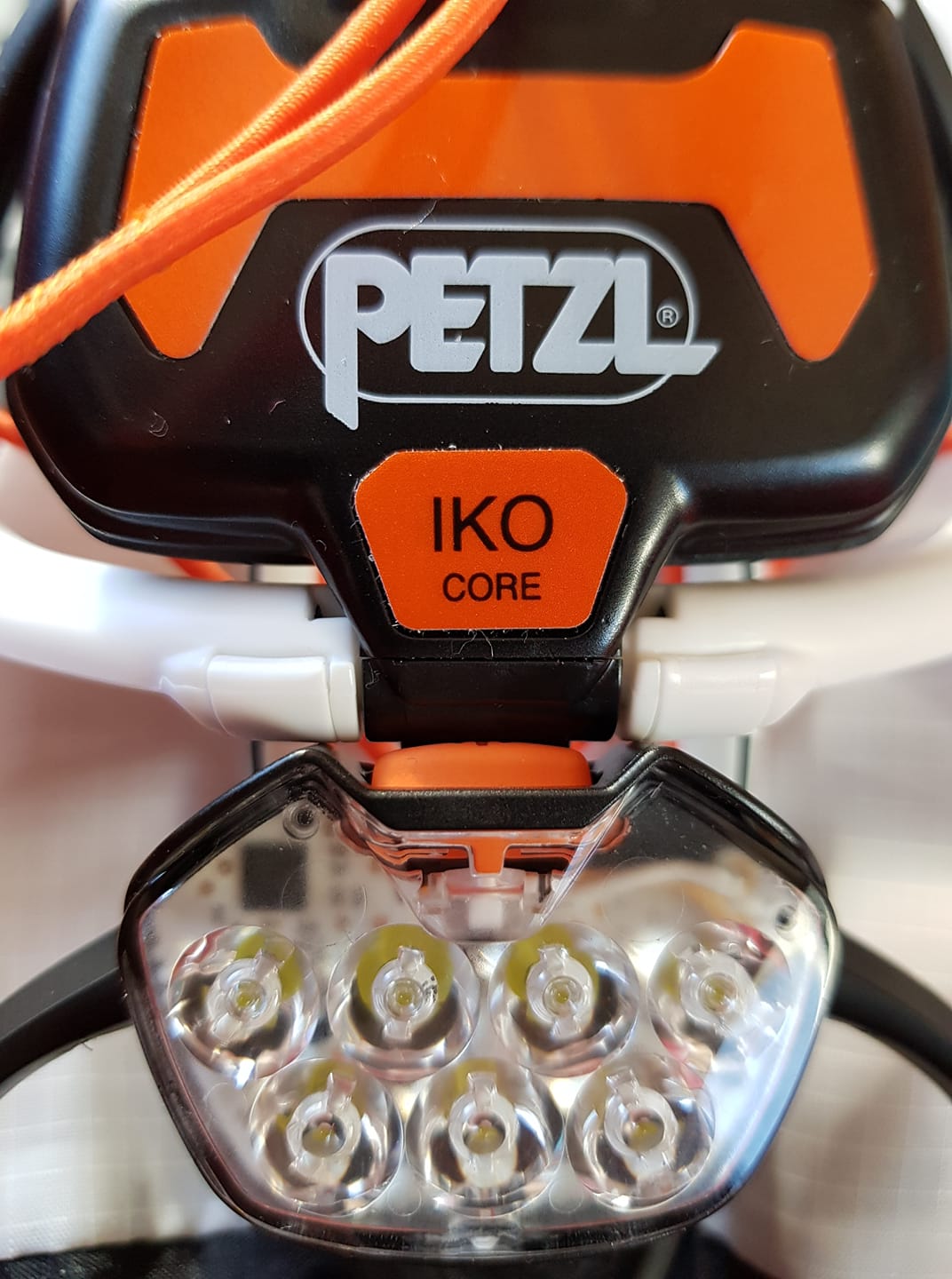
The next level up at 100 lumen is decent. It is a white light and spreads wide with a good even distribution. I could happily run on this setting for most terrains.
Just in case things get a lot more technical or I need the extra power to see further down the trail, there is the maximum power of 500 lumen. This is surprisingly powerful considering the size and weight of the unit, but of course it does eat up the battery at a considerable rate (2.5hrs) meaning use of this setting should be rationed for longer runs.
The combination of the AIRFIT system and the light weight (79g including battery), makes this possibly the closest a headtorch has got to being forgotten once on for me. The light is good and has a nice white and wide spread. It comes with a small white bag to keep it in which also diffuses the light nicely if you place the torch in there switched on which make a nice lamp. This would be great for camping or stopping at a checkpoint maybe. A nice touch. Initially I thought the 6 lumen power setting was too low to be of use, but actually it would be ideal for map reading, rooting through your bag and other close confine jobs, where you just don’t need the blinding super brightness.
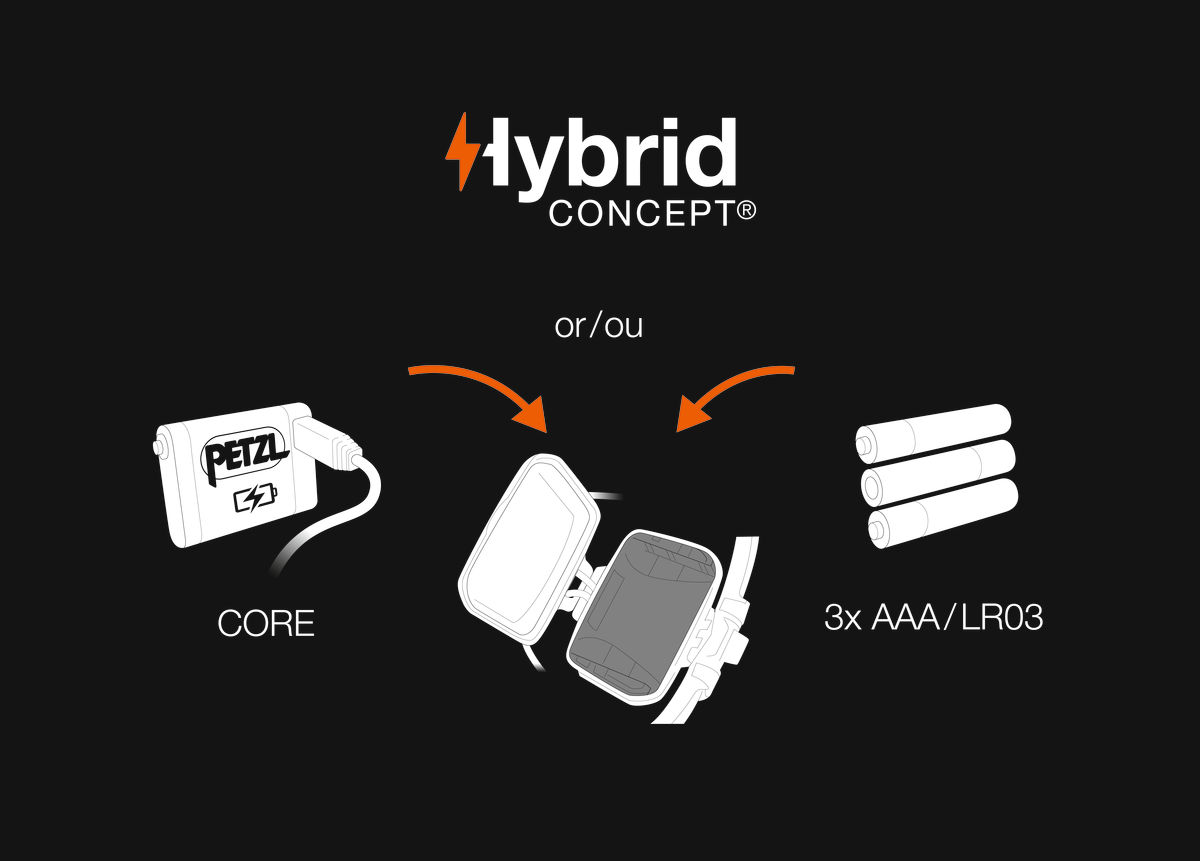
One issue I had was that the light unit at the front swivels on a hinge joint which is great, but for me it didn’t point downwards enough, so would have to bend my neck a little when running fast technical descents. A little frustrating to be honest. Maybe my head is a funny shape! I would be interested to hear if this issue is unique to me or if others have found the same.
Overall, this has been a great light to try out. For me running mostly 1-1.5hrs it has been ideal. Very comfortable, no wet sweaty band, adequate light and brilliant that it is duo power so can be charged or slip in batteries if more practical. My one bug is that the light doesn’t point downwards enough, but it is liveable for me. Would it be good for a full night in a race? I think it would be ok, but I would probably want a little more power and battery life. An ideal headtorch to grab for an evening run, or to pack into your pack in case your run spills over into the dark.
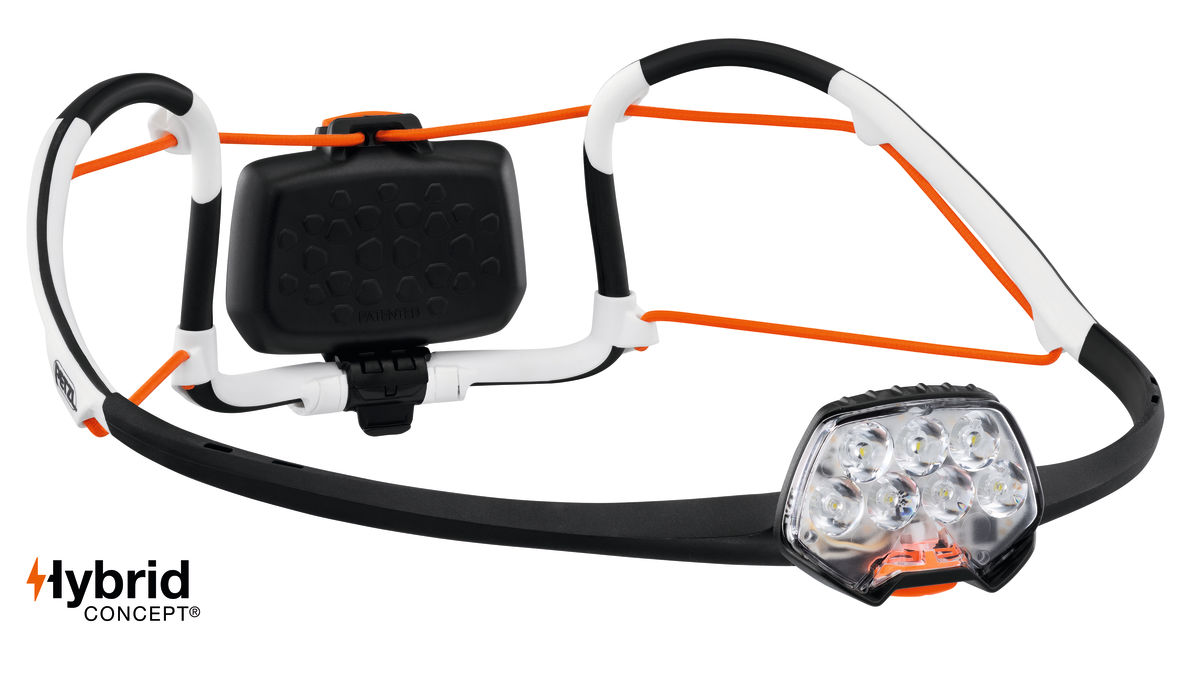
It is reasonably priced at around £50 online so if you are in the market for a quality, comfortable headtorch for training in the evening, then you should try an IKO core out.
If you would like to purchase an IKO core, then please consider using the following link. I will collect a small commision being a member of Amazon Affiliates
Written by Neil Bryant for the URC
I have had many Petzl headtorches over the years and am generally very happy with them. They are not always perfect, but that is due to their constant evolution as they try to improve and rethink everything about the simple headtorch.
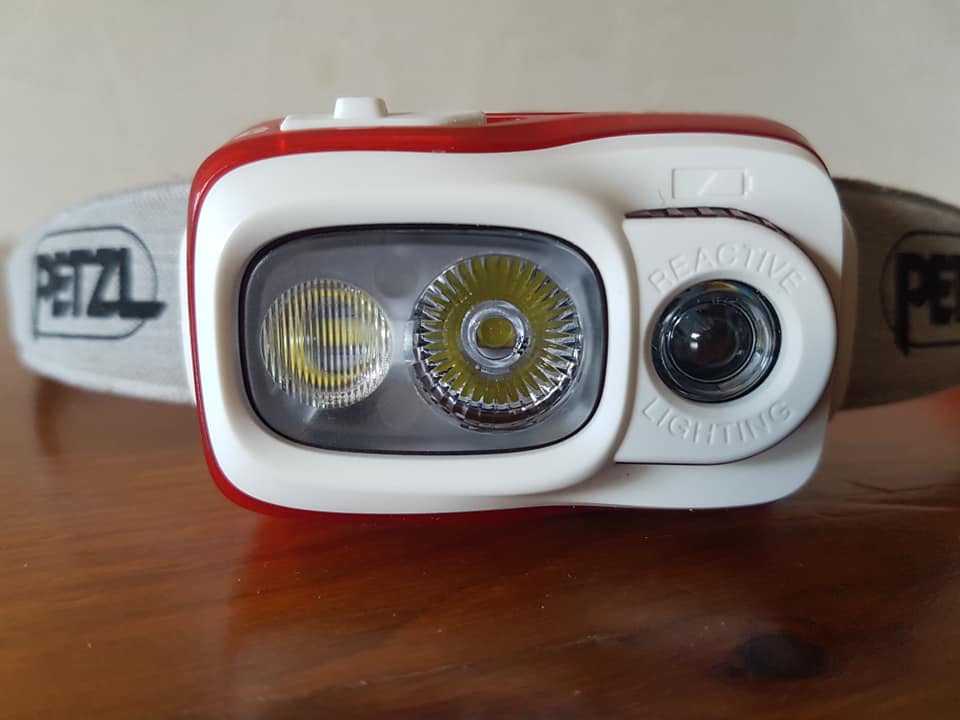
The Swift RL is compact and weights a measly 100g. Don’t let its slight size fool you into thinking it won’t have the guts to light up the trails, as it has a max output of a whopping 900 lumen! The battery is all part of the light unit on the front of the head, and this is all held in place with a brilliant, innovative strap.
There are three powers in two separate modes. Standard mode, and Reactive mode. I have a few other of Petzls’ torches that uses Reactive technology, and have to say it is a brilliant system. For those that don't know, it has a sensor in the front, that recognises that objects are close so dims a bit, but when you look up the trail the power automatically goes up. It is really great for not blinding people, for saving some battery, for looking for landmarks etc. It can struggle in rain and fog, but that is easily remedied by switching to Standard.
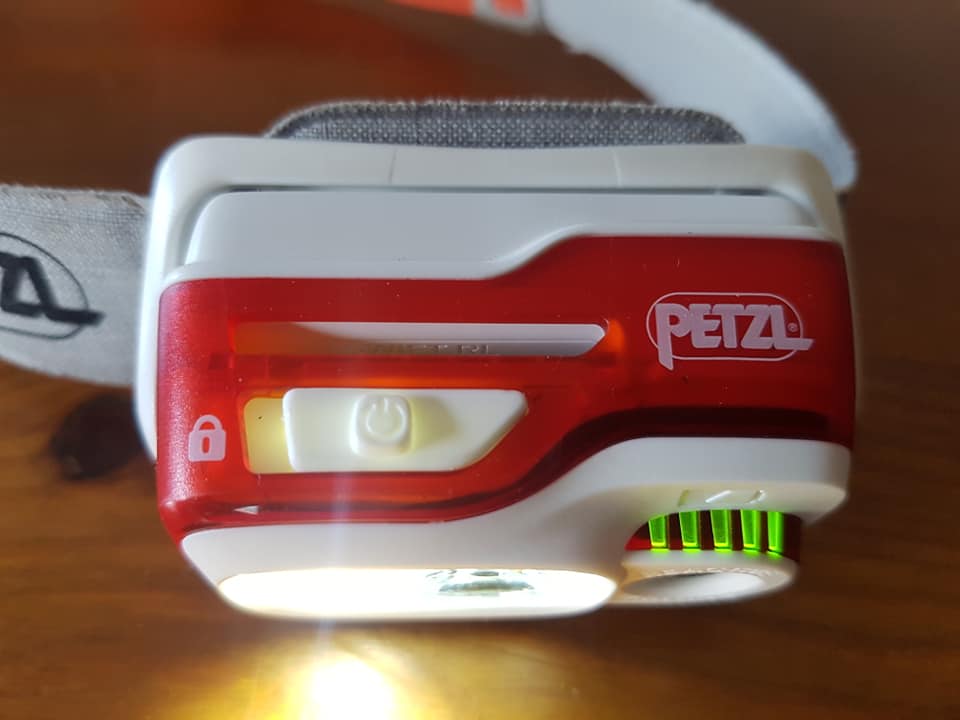
It is operated with one button, which you can lock for stowage. It is simple and intuitive to use.
Power is provided by a 2350 mAh Lithium Ion rechargeable battery. There is no option to use normal batteries. I have two of these batteries which is plenty enough power to get me through anything I would do now. To recharge takes around 6hrs which seems long to me.
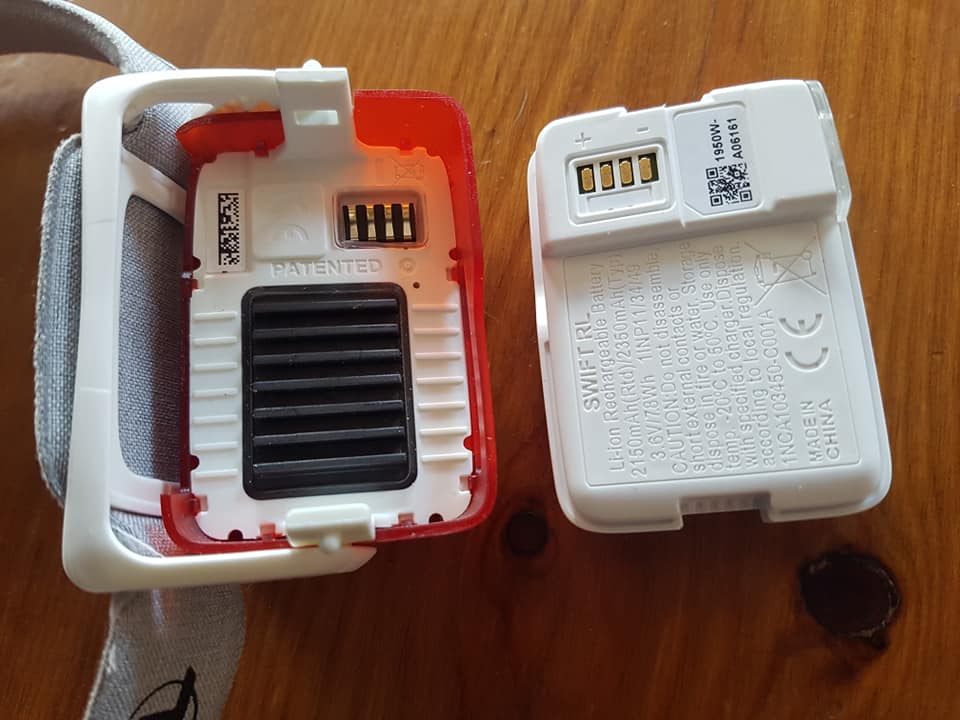
You just need a micro USB cable to charge it which is great as it is pretty standard. It is the same as my phone. To remove the battery, you need to swivel the light around 180 degrees and the pull away the two clips to release it. It is a bit fiddly and I would imagine that it could be a pain to have to do mid race in the dark in bad weather while tired. Something less fiddly would be better.
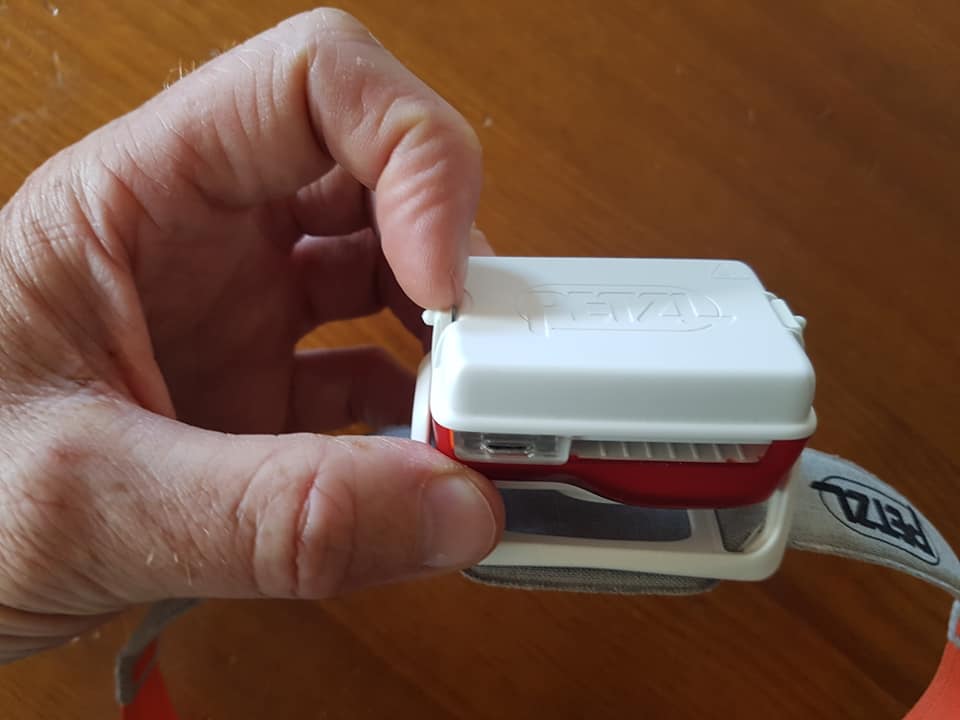
Now on to the best piece of innovation on the Swift RL, in my opinion, the strap. It is a very clever, yet simple system. You just put it on your head, and adjust by sliding the two plastic sliders together to make it tighter, or pull apart to tighten it up. Very quick, not at all fiddly, light and doesn’t get all tangled up when you are not wearing it as it is so simple. I really liked the Nao strapping system as it is very clever and comfortable, but a little too over-engineered for my liking, and on more than one occasion, I have got it in a bit of a tangle. The Swift system is far superior to the Nao (though the Nao has the battery on the back).
There is also a simple power gauge that consists of five green LED’s that light up for a few seconds after turning on and off. I assume each LED represents 20% power, so can give you a half decent idea of the battery condition.

I don’t normally do much running that calls for a headtorch, but over the last few months, the best time to run has been after getting the kids to sleep, so the Swift has been getting more use! It gives a powerful diffused white light which easily lights up the trails enough, even the most technical are lit up like it’s daytime. The reactive beam is really powerful when looking up and checking out the trail ahead. Personally, my lighting needs are met. For me, the lighting technology has come so far now, that the improvements can be only improved with battery size/life, the comfort of the torch on your head and how well it is packed away. The battery is small and light. To carry a spare is no problem. Of course, smaller would be better, but this will come with time as the technology improves. The comfort of the Swift is brilliant. It is just brilliantly simple to put on and adjust. I also double the strap up and put it around my upper arm for when I run in the evening before it gets dark. It even feels comfortable there.
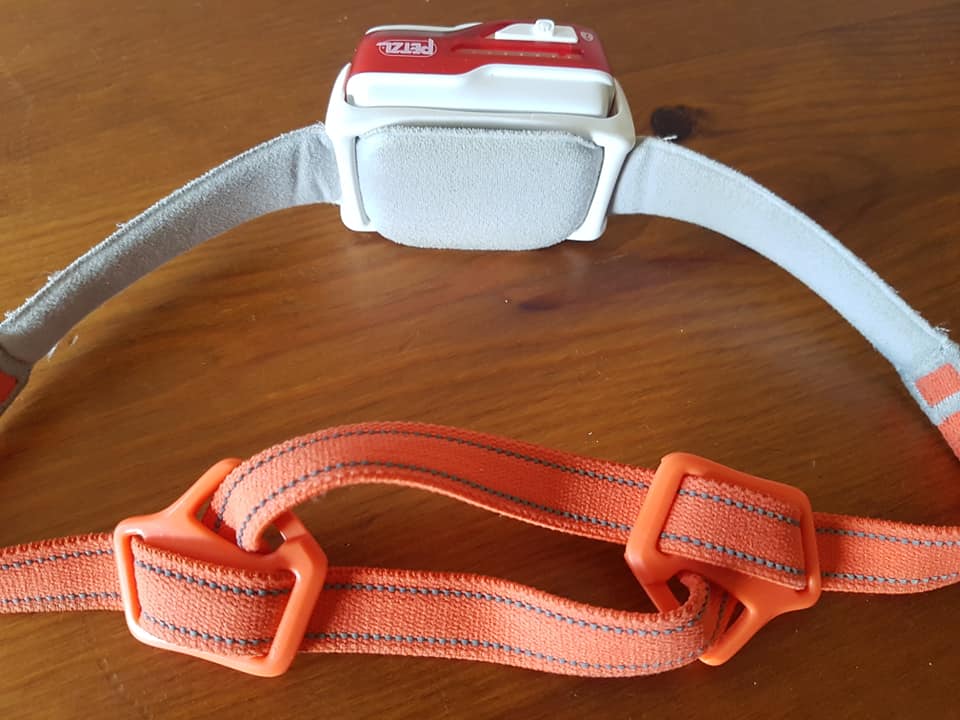
To summarise, this is a seriously impressive head torch, that shines (sorry!) on so many levels. It is light, powerful, comfortable and at £72 it is a decent price for what you are getting, though the spare batteries are around £35. I find the battery release catches a bit too fiddly and some people would prefer it if it accepted AAA batteries as well, but overall, this is now my everyday torch. Now Petzl have just released a new model, the IKO Core which also looks innovative...
If you are considering purchasing the Petzl Swift RL, then please consider buying it through the following link as a small proportion will go back into the URC. Thanks.
Written by Neil Bryant for the URC
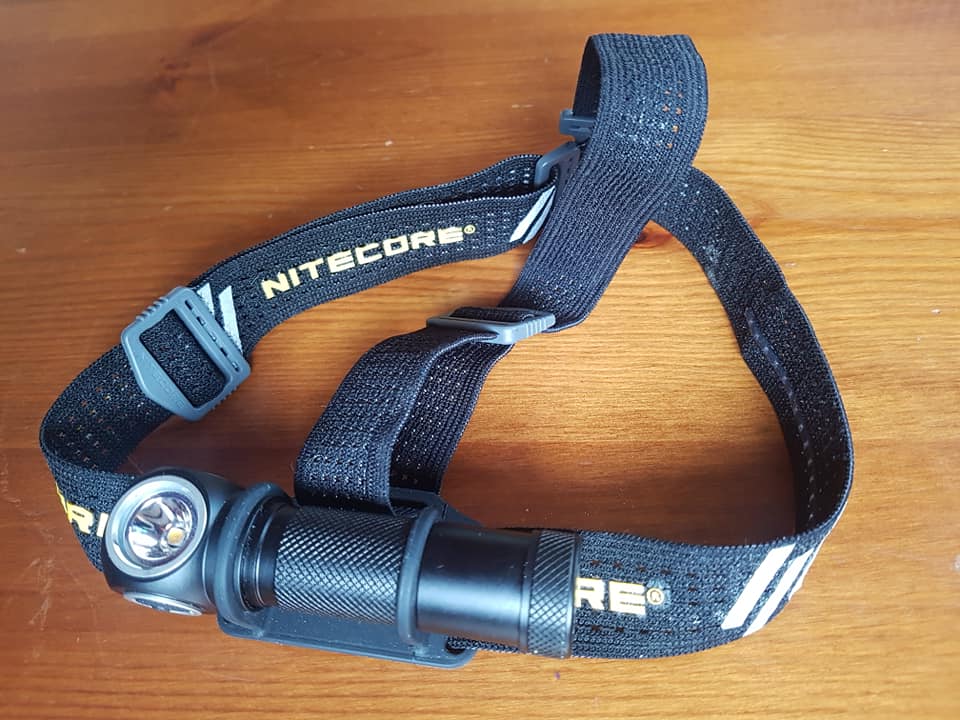
The torch attached via the rubber mount, to the heand band.
When Nitecore contacted me, I’ll be honest, I had never heard of them, but after a quick look online, I was interested. A few weeks later and a package arrives from Hong Kong, and inside is the UT32 headlamp (I was provided with this sample free of charge). I am surprised as it is not one unit, meaning, the light can be easily slid from the headstrap giving you a hand torch which could be handy for certain situations. There is also a 2900mAh rechargeable battery that has a micro USB slot on it to charge it which I don’t think is a new idea, but brilliant none-the-less.
When you load in the battery and tighten it up, the light flashes a number of times to signify the strength of the charge. 2 flashes then a pause and then 9 flashes, signifies 2.9 volts! Simple and effective.
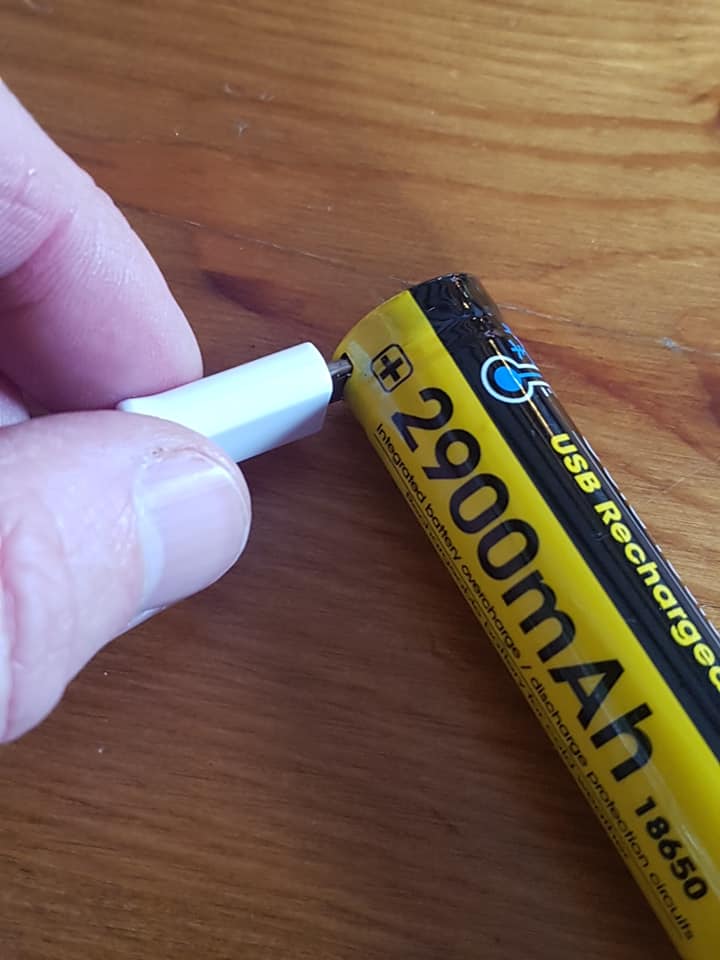
How to charge the battery using a micro USB.
It is rated to IP68 which means it can be submersed in 2m of water which is generally enough for the average trail run, even in the UK!
There are two buttons and two lamps on opposite sides of the cubed end. Each lamp has three powers plus a turbo mode. One of the beams is called Cool White and the other, Warm White.
Of the two beams, the warm white beam is just about the brightest. It is a yellowish light. Its lowest setting is 60 lumens and lasts a whopping 18hrs, while its higher standard setting is 370 lumens for 3hrs 45mins. The turbo mode is a huge 920 lumens for 1hr 30 mins.
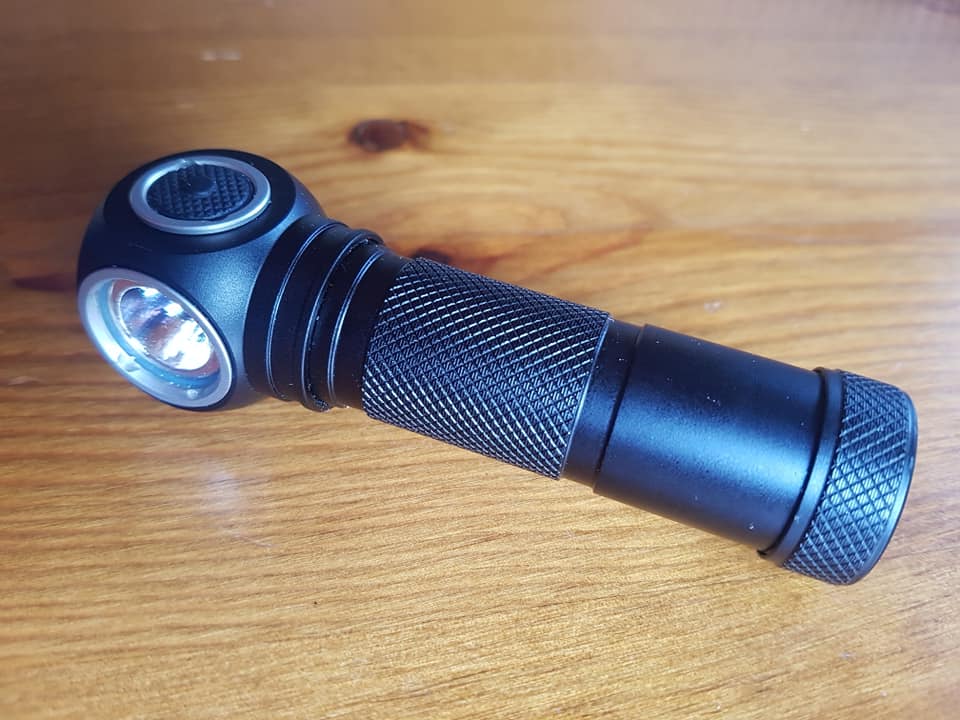
The torch. You can only see one button and one lens. On the opposite side to the lens is a second, and the same with the button.
The cool white beam is as the name implies, a white light with a power of 70 lumens for 18hrs at the lowest setting. 410 lumens for 3 hrs 45 mins at the higher setting, and 1100 lumens for 1hr 30 mins on the turbo setting.
For both bulbs there are also, SOS and beacon modes. SOS for emergencies and beacon flashing. Ideal for getting help if things go wrong.
It is simple and intuitive to use. Just two buttons which I worked out quite quickly without looking at the instructions.
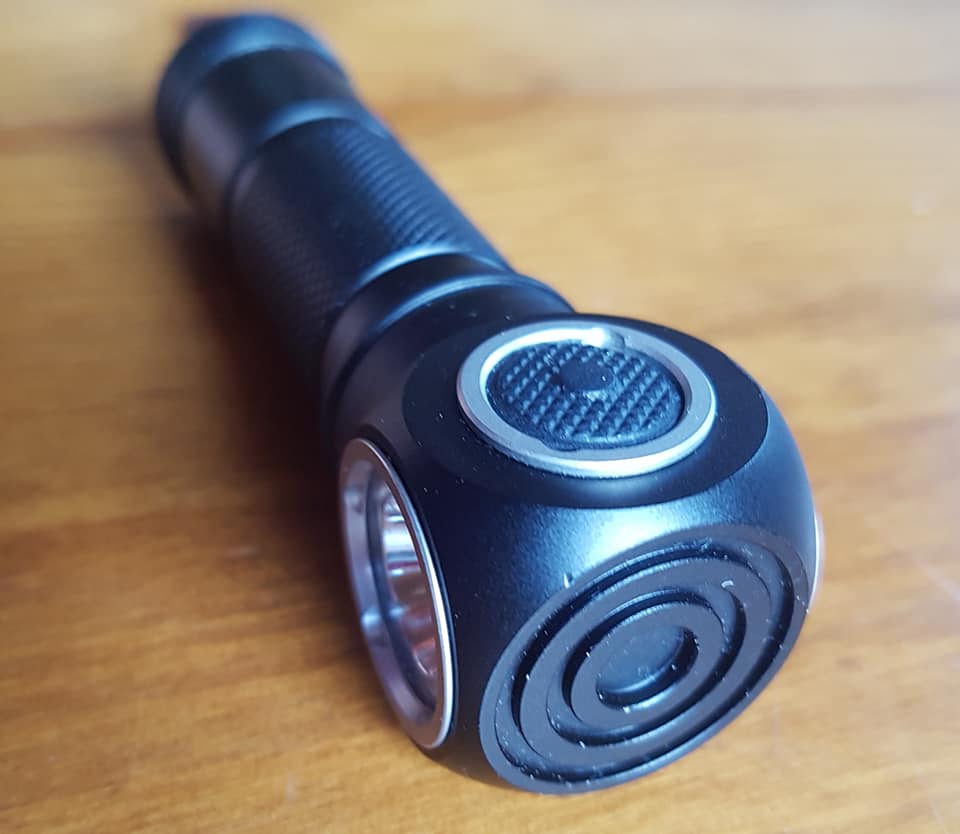
It is great in use. A bright, wide and even beam. The head strap is comfortable and holds the unit secure as I ran. Personally, it provided all the light I need and much more. If on the road, the lowest setting was ample, if on easy trail, then the lowest or the mid-level, and if I needed to look at things in the distance, like trying to see my bonkers dog as he disappears after a scent, then the turbo setting is superb. Turbo just stays on for 30 seconds, but also can be set to stay on permanently.
I have taken it out for some dog walks too but without the head strap which is great as I don’t always want to wear a headtorch. It seems really tough with an aluminium casing, and I just weighed the unit (minus headstrap) at 96g. It is secure and comfortable on the head.
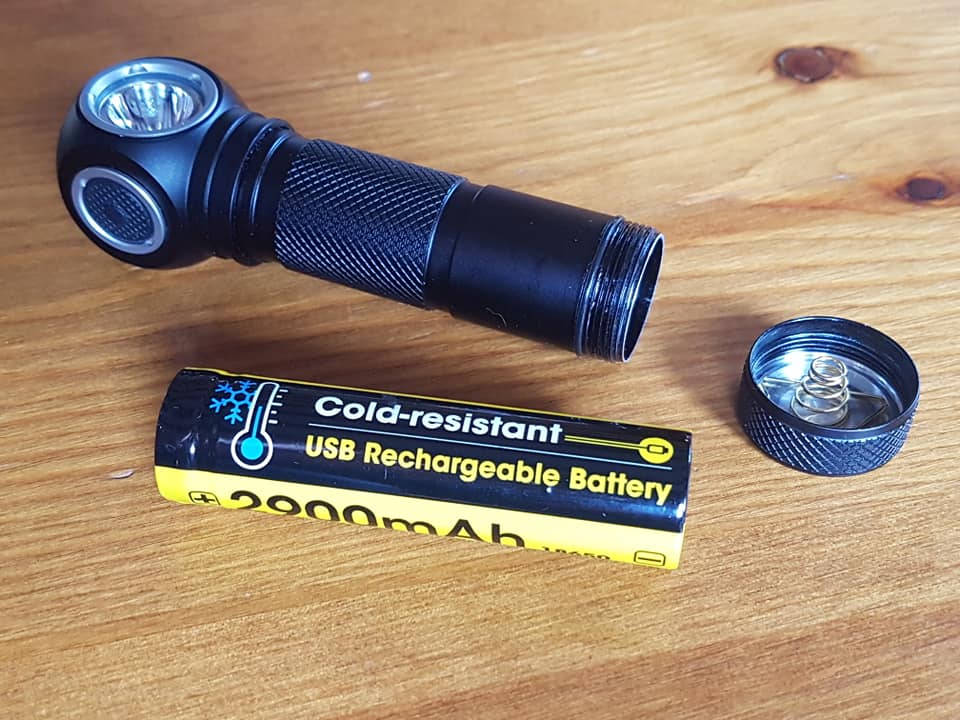
An interesting design and well executed. Nitecore are not new to the lighting game, just new to trail running, so they know what they are doing. It is nice to have the two different types of beam, but I’d like to see a more basic model with just one button and one bulb. Still a good unit though and maybe if you are running through the night and you are being driven crazy by living in that one beam of light, if you could swap it for a warmer yellow light it could help mentally?Certainly a great torch that is worth a look if you get a chance.
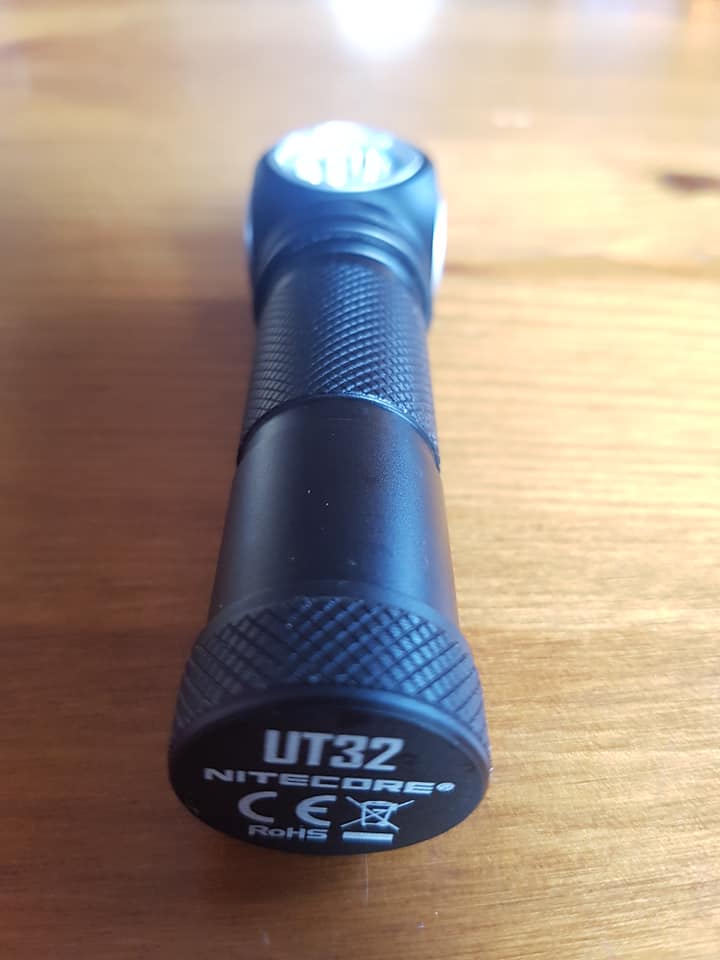
Written by Andrew Easom Bentley - http://outdoorkinetics.co.uk
A couple of weeks ago, I posted a review of the AP Pro Series 100 Lumen Head torch which packs a lot of punch for it’s £25 price tag but unfortunately it didn’t really work too well for trail running. Today I’m going to be looking at a model from the other end of the price spectrum, the £145 Petzl NAO 2 which updates the original version of the torch for 2014 with a max output of 575 Lumens.
Specification
- Reactive lighting with variable power from 7 to 575 Lumens
- Two pre-set reactive lighting power settings. One for max power and another for max autonomy (optimised battery life)
- Two further pre-set constant power settings
- Ability to customise lighting settings by downloading Petzl’s ‘OS’ application and connecting the torch to your computer
- Battery life of up to 12.5 hrs, depending on settings (see table below for more info)
- 20 Lumen ‘Reserve mode’ providing 1 hour of burn time in the event that battery level becomes critical
- Power provided by a lithium Ion rechargeable battery with the option to use two standard AAA batteries in an emergency (with reduced performance)
- Rechargeable via USB port (including phone chargers, car cigarette lighter adaptors, computers etc)
- Optional belt clip and extension cable for battery
- Replacement batteries available at around £40
- Adjustable fit with draw cord head harness
- Battery level indicator lights
- Charge time of 5 hours
- Tilt-adjustable light unit
- Water resistant to IPX4
- Weight of 187 grams
Reactive Lighting Explained (hopefully….)
It seems as though there has been a big increase in the number of head torches on the market that are targeted at trail runners and this has lead to an inevitable increase in power, as everybody wants to have the biggest and the baddest model. A potential down side to this is a reduction in battery life OR an increase in battery size and weight to compensate. Pezl have sought to overcome this with their ‘reactive lighting technology’.
The NAO features a clever sensor which detects the amount of light that is reflected off of objects in the torches path and automatically regulates it between 7 to 575 lumens so that (in principle) you have loads of power when you need it and just a little bit when you don’t. This is intended to improve the battery life, reduce the amount of faffing about that you need to do with the settings and prevent you from being temporarily blinded by reflected light if you look down at a map etc. This concept is most easily understood if you take a look at .
The table below is lifted straight from the Petzl website with a couple of minor edits to hopefully illustrate how the lamp performs at the different factory pre-sets. These can all be customised via the Petzl OS application
Lighting Technology Lighting Modes Brightness Distance Burn Time Reserve Mode REACTIVE LIGHTING Max Autonomy 7 to 290 lm 2 to 80 m Around 12 h 30 1 h at 20 lm Max Power 7 to 575 lm 2 to 135 m Around 6 h 30 CONSTANT LIGHTING Low Power 120 lm 60 m 8 h High Power 430 lm 130 m 1 h 30 First Impressions & Thoughts on Design
Petzl have been producing high quality, performance headlamps for a long time and they know their onions. It therefore comes as no surprise that the NAO is a well constructed piece of kit with impressive build quality.
The headband is adjustable via an ingeniously simple draw cord system that works really nicely so it is easy to customise the fit and ensure that the unit sits securely on your head. Unfortunately, the NAO lacks any padding between the lighting unit and your forehead (apart from a thin strap). This is a common bugbear of mine and I’d prefer to see a thin section of foam to provide a little bit of cushioning as even the best fitting torch can begin to dig into your head after a while and become uncomfortable.
Petzl have been able to cram a lot of power into a small battery and the unit feels surprisingly light as a result. The battery comes with a set of three lights to indicate the power level which is a great feature but you have to take the lamp off to check it. I don’t see this as a flaw because some units don’t have battery indicators at all but I think an audible alarm indicating say 75%, 50%, 25% power would be another useful addition for future models, especially for ultra running (although I’d also want the option to turn it off!).
The method of battery release is one thing that does bug me about the NAO as it requires you to press a fiddly and fragile looking clip with your finger tips which can be frustrating if you are rushing and difficult with cold, numb hands. This isn’t a major issue but I found it surprising, given the technology and attention to detail that has gone into the rest of the design.The lamp is turned on and off via a rotating knob on the side of the unit that allows you to scroll between the settings. This is a really great piece of design and is much easier to operate than annoying little buttons when you are on the move or wearing gloves. It also has a ‘lock’ setting to stop the light from turning-on by accident during storage. Most torches quote a simple estimated battery life at a fixed output level. Things are a bit more complex as this with the NAO as the actual battery life you get will be dependant on a high number of variables. For example, if you tilt the light so that it is pointing out in the distance, the unit will switch to high power and consume the battery quickly whereas if you are running next to a partner and they have their torch pointing at the ground in front of you next to yours, the NAO will drop the power and the battery consumption is reduced. This concept is actually pretty easy to understand when you use the torch – the brighter the beam, the quicker it’s using the battery. To be honest, I haven’t timed the battery life at the different light levels to verify if the Petzl figures are correct but I’ve seen nothing to indicate that they are too far off of the mark based upon a few weeks of regular use.
Performance
The NAO provides a comfortable fit that remains secure, even if you are landing with heavy foot falls when running quickly down steep descents. It comes with an optional additional strap to go over the top of your head but I haven’t found that I’ve needed to use it. The lamp unit does bob around a tiny bit if you are really pushing it on rough ground but this is hardly noticeable and the overall stability is much better than many units that are out there.
Brightness levels are really very impressive indeed, especially at the upper end of the torches power range. I have used other units that claim higher outputs of up to 1000 lumens but I personally think that this starts to get overkill for running and the 575 Lumen NAO offers more than enough for every situation you are likely to encounter, even whilst moving quickly on the steepest most technical terrain. The torch has two lamp units, one which provides a diffuse beam to illuminate object that are relatively close by and another more focussed beam for looking further into the distance (i.e. route finding). The reactive lighting technology switches between the two depending on feedback from the sensor and I think Petzl are right on the money with the light distribution levels provided by the two beams.
90% of the time, the reactive lighting works in a completely unobtrusive manner as it seamlessly adjusts the power levels to provide the optimum level of illumination. Quite often, you don’t even notice that it’s happening (in a good way) and you can pretty much leave it to do it’s own thing. As well as preventing you from being blinded by reflective light if you look at an object close up, it also provides a bit of a safety feature if you accidentally shine the beam in someones face or look at an oncoming car that has it’s headlights on as it will reduce the brightness (although this is obviously still unpleasant for the victims).
There are occasional circumstances where the reactive lighting doesn’t perform quite how you would like and the brightness is reduced unexpectedly. The sensor can become confused by things like fog, breath-mist or reflective material on other runner’s clothing. I’ve come across a couple of instances where other reviewers have been quite critical of the original NAO for this but to me this makes no sense whatsoever because in these circumstances, you can simply switch from reactive lighting to constant lighting in an instant and the NAO will work just like a regular high-performance head torch.
I’ve also noticed that some people have come down quite hard on the NAO’s battery life. Yes, on the face of it, 1.5hrs at a constant 430 Lumens doesn’t sound that great but in reality, you are never going to need to use it that way and when you consider the weight of the unit and the fact that there is almost endless scope to customise the settings to provide the battery life you need, I just don’t see this as a major concern. Spare batteries are quite expensive however at £40 and I think it would be great if Petzl produced an optional larger model that works with the belt clip for extra long excursions.
Conclusion
The Petzl NAO 2 offers fantastic performance and innovative technology that has been well executed. You can tell that it has been developed and tested by people who really understand how their customers are going to be using the lamp and have come up with a near-perfect design. Whilst £145 is a lot of dosh for a headlamp, you can see where this money has been spent and I think it’s pretty good value at the price (better still if you can find one for less!)
I’ve been using the NAO regularly for the last few weeks and will continue to do so throughout the winter. I’m interested to see how the reactive lighting performs in a wider range of conditions and will update this post over the coming months to report back but I’m really impressed so far!
This product was provided as a test sample by the manufacturer, please refer to my gear review and advertising policy for more information.
Where to Find One
The Petzl NAO 2 575 Lumen can be purchased at Wiggle and Amazon
.
I make every effort to ensure these reviews are as objective and honest as possible to help you decide if a product is right for you. This takes me a lot of time and effort and if you are interested in a product I have reviewed, you can help me keep the site going by placing purchases through the links and adverts at no extra cost to yourself. Thanks for your support.
Written by the URC team
Running is, and should remain a simple sport with little obligatory gear to just get out there. If you want to pop out for a short run, then shoes and comfortable clothes are the minimum. As soon as the running becomes ultrarunning though, the list grows a little. You will need to think of food and drink, and ways to carry them, plus some clothing for if the weather turns. If you are going to be running at night or close to night, then you will be needing a torch. Depending on your budget, you’ll be after something as bright as possible to light the trail ahead, and help prevent falls. The list also needs a second torch. Isn’t this a little overkill I hear you cry. Well, definitely not. The first obvious reason to carry one is in case your main light fails. No need to explain that any further. The second reason is equally important, though will happen more frequently. Changing batteries. Have you ever tried changing batteries in complete darkness when you are completely exhausted and could really do with crawling into bed? I have, and believe me it’s a potential nightmare. From finding the fresh batteries (and not dropping them!) to fitting them and not getting the dead mixed up with the fresh. You could loose lots of hard earned time if in a race situation, and could really cool down if the weather is bad which could get dangerous.
So, what is the solution here. We need something ridiculously light, super small but with enough light to actually be of some use. Ideally the backup light will be useable even after being stuffed in the bottom of you pack for ever and not need constant battery changes and also be simple to operate in the dark.
Enter the Petzl e+LITE
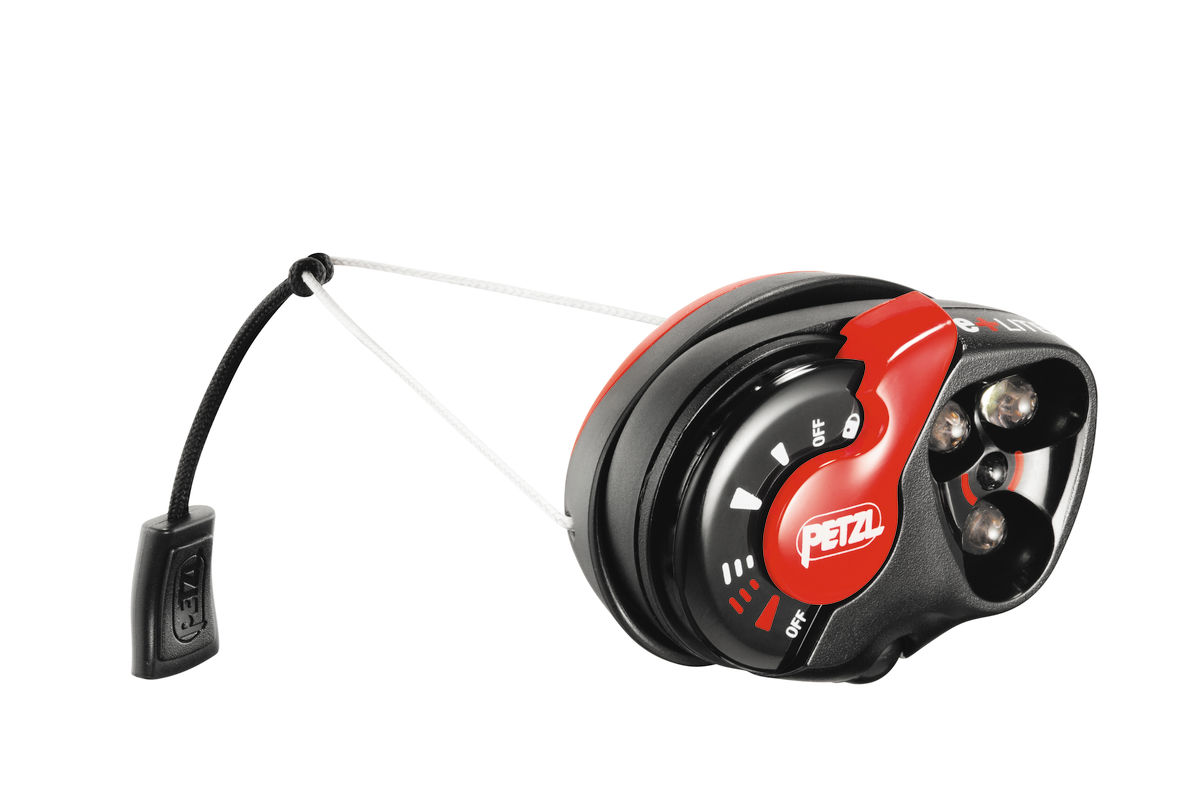
This insanely small and light torch weighs just 27g and is so, so small. I used to have one of these years ago that had a thin piece of elastic to hold it on your head, but now it has a ZIP retractable cord which certainly makes for a big improvement as it keeps it together as a nice neat package when buried deep in some pocket. Many will be familiar with the ZIP system as Petzl employ it on other torches in their range. I find it holds the e+LITE firmly on your head, but if you need to wear it for prolonged periods then it can dig in a bit. This is easily resolved with a buff or hat.
It’s waterproof rating is IP 67, meaning it can be 1 metre underwater for 30 minutes which is plenty adequate for the very worst weather. Normal batteries would double the size, so Petzl opted for 2 x CR2032 batteries (similar in shape and size to a 10p piece).
One of the great features with this piece of emergency equipment, is that you can store it with new batteries for up to 10 years and it will still be useable!
Ok, so it certainly ticks a lot of the boxes that an emergency light should, but what is the actual light like? Well, it is a surprisingly useful 26 lumens on full beam. I’m not going to pretend that this is a powerful torch, but it is certainly powerful enough to get you off the mountain should you need it. Though considering the size, this is an incredible amount of light. If you haven’t held one of these, and used it in the dark, you too will be amazed at the brightness for the size.
There are five light settings that are activated by a simple lever that is super easy to operate, These are proximity, for map reading and close stuff where you don’t need much light, Movement, for, well, movement. Walking, running, climbing etc. Then there are the three settings that are to help people find you. Two strobe settings. One in white light and the other in red. These can be set and left in emergency situations to help search parties locate you. The white is visible up to 200m away and runs for 75 hours. The red is visible up to 300m and lasts for 30 hours. Finally there is a proximity red beam which also last 30 hours and can be seen up to 300 m away. This feature alone is a potential lifesaver when things go wrong. Last year during the Frostskade race in the Scandinavian Arctic, one of the cp crew had set up an e+lite on red strobe and left it on a stick stuck into the ground. I have no idea from what distance away I first noticed it, but believe me it was a huge distance. Completely invaluable if you are injured and can’t move.
So, all I can do is sing praises for this little luminary wonder. There are of course limitations due to size and weight. All though the batteries last for an incredible period (proximity = 70h,maximum = 55h), they are not programmable, meaning that they progressively dim from the minute you start using it. An example of this is that on full beam, the distance the beam will travel is 29 metres, but after 30 minutes it will be reduced to 13 metres, and after 10 hours down to 6 metres. After 30 hours it will be down to 4 metres! This is a limitation, but certainly not a complaint as it is primarily designed to be a pack and forget item that can provide emergency lighting, which it achieves brilliantly.
So, there is a review which has been a pleasure to write as I can confidently say that everyone should own one of these, even non ultrarunners. It is just so practical for it’s size and the fact that the batteries stay good for so long when left. When ever I travel anywhere, I always throw it in and it’s surprising how often it gets used. One tip though – make sure you are disciplined with storing it as they are impossible to find if you forget where you put it!
Written by Simon James - http://mountaingoattrails.blogspot.fr


